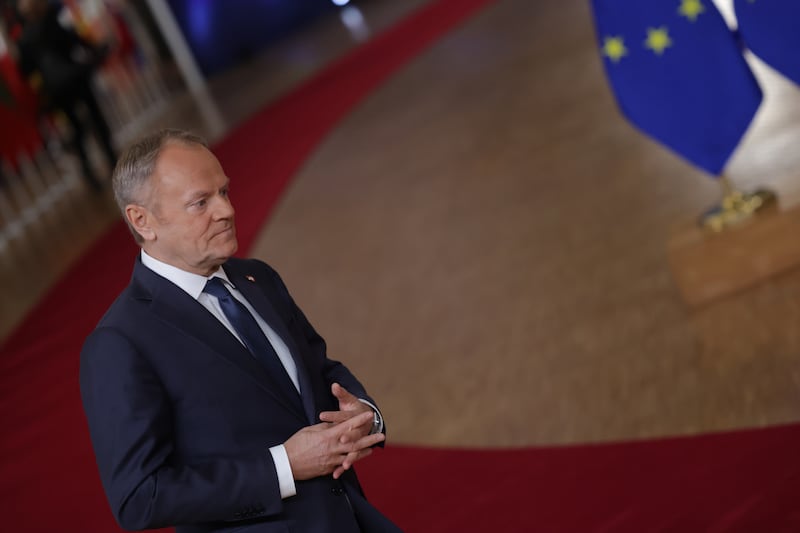Hoxton in east London is a hotbed of hip culture, dripping with urban cool. It is part of Hackney, one of the most ethnically diverse boroughs in the city and, over the years, home to many immigrants. Young Irish city and media workers are among the groups that flock to the area in their hordes.
The area’s eclectic past and present, however, feeds into occasional outbreaks of friction.
The recently revamped Museum of the Home fronts on to Hoxton overground station. In line with the area’s cool urban aesthetic, the museum’s main entrance is modern and architecturally interesting. Yet this wasn’t always the front entrance. The museum used to be accessed from the other side where, near the period entrance, there still lies a statue of slave trader Robert Geffrye. The museum opened over a century ago in buildings he donated to house widows of ironworkers.
Geffrye was a 17th century lord mayor of London and a merchant who earned his fortune in tobacco and the Atlantic slave trade. After the museum reopened in 2021 following a three-year renovation, a campaign to remove his statue was led by prominent members of the local community including Labour MP Diane Abbott. Local residents who were surveyed by the museum also wanted it gone.
The Tory government at the time said the statue should stay in place and that the truths of the past could not be rewritten, no matter how unsavoury they may be. The issue has remained stuck in a bit of a stalemate since.
[ The Irishman determined to expose the slave tradeOpens in new window ]
The museum has indicated that it would like to move the statue but it would need formal permission to do so. It has suggested shifting it to the nearby ironmongers’ graveyard, where Geffrye is also buried. A plan is expected to be brought forward in coming months.
Meanwhile, as the debate continues about the appropriateness of the museum’s statue outside, inside the exhibitions focus on how people, including immigrant communities, lived through the ages. These days, young Irish immigrants to urban oases of cool such as Hackney live very different lives to those who came before.
This year, as part of its Rooms Through Time exhibition, the museum opened a room imagined to be the 1956 Camden home of Irish newlyweds Kathleen and Jack. Supported by the London Irish Centre and with film-maker David Kelly as lead consultant, the curators recreated a “room upstairs”, where the Irish tenants might have rented a room from the live-in landlord, but shared the bathroom.
The room captures a moment in time. When I visited it last week it was imagined that Kathleen, a nurse from the North, and Jack, a building worker from Roscommon, were getting ready for a night at the Galtymore dance hall in Cricklewood where they had first met a few years earlier.
Jack’s trousers were on the ironing board. Kathleen’s nurse’s uniform was hanging up in the wardrobe ready for work after the weekend. There were cigarette butts in an ashtray by the bath. The ubiquitous Sacred Heart of Jesus surveyed the scene from its hanging spot on a wall by the bed.
[ Making home in the museum: how Irish arrivals to London lived in the 1950sOpens in new window ]
The room was littered with the accoutrements of its time. There was a period fiddle on loan from a music school. A pink hairdryer on the dressing table was apparently a popular item of the day. In the corner were a pair of 1950s hurleys. All of the items had their own stories and some were personal to those who had produced the exhibit: a suitcase sitting on top of the wardrobe had belonged to Kelly’s Kerry-born mother, who died in recent years at the age of 92.
The opening of the Irish room earlier this year attracted three times as many visitors as a normal exhibition debut. Local Irish groups have made “reminiscence visits” to critique the artefacts. Kelly, who had lobbied the museum since 2006 to open an Irish display, has held discussions with other museums in Ireland and Britain about how to use the ”room upstairs” as a template.
Rooms Through Time includes exhibits derived from other immigrant and ethnic communities: a Jewish family in a 1913 tenement; the 1973 front room of a London family with roots in the Caribbean; a modern flat occupied by Vietnamese immigrants.
The messy complexities of life are captured by these snapshots of immigrant existence, but also in the row over the slave trader Geffrye’s statue outside the museum’s back door.
Abbott has said the statue remains “an affront to his victims and offensive to all of us who abhor slavery”. The new Labour government hasn’t yet indicated what approach it will take to the issue.















